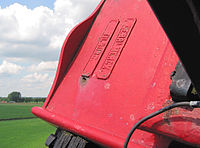
The post mill is the earliest type of European windmill. Its defining feature is that the whole body of the mill that houses the machinery is mounted on a single vertical post, around which it can be turned to bring the sails into the wind. All post mills have an arm projecting from them on the side opposite the sails and reaching down to near ground level. With some, as at Saxtead Green, the arm carries a fantail to turn the mill automatically. With the others the arm serves to rotate the mill into the wind by hand.

Alphen is a village in the Dutch province of Gelderland. It is a part of the municipality of West Maas en Waal, and lies about 7 km north of Oss.
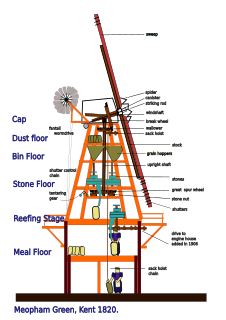
This glossary of mill machinery covers the major pieces of machinery to be found in windmills, watermills and horse mills. It does not cover machinery found in modern factories.

Bragg's Mill, William Bragg's Mill, Bartlow Hamlet Mill or Stevington End Mill is a grade II listed post mill at Ashdon, Essex, England which has been restored.
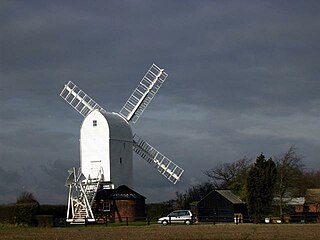
Aythorpe Roding Windmill is a Grade II* listed Post mill at Aythorpe Roding, Essex, England which has been restored to working order.

Ramsey Windmill is a grade II* listed post mill at Ramsey, Essex, England which has been restored.

Upthorpe Mill is a Grade II* listed post mill and Scheduled Ancient Monument at Stanton, Suffolk, England, which has been restored to working order.

The Molen van Rolde is a smock mill in Rolde, Drenthe, the Netherlands. The mill was built in 1873 and is listed as a Rijksmonument, number 32698.

De Vlijt or Molen 't Op is a post mill in Koudum, Friesland, Netherlands which was built in 1986 and is working in working order. The mill is listed as a Rijksmonument, number 34081.

De Sweachmermolen is a smock mill between Langweer and Boornzwaag, Friesland, Netherlands which was built in 1782. The mill has two functions: it is a drainage mill and a corn mill. It has been restored to working order as a drainage mill and is listed as a Rijksmonument, number 13241.

The spinnenkop of the Netherlands Open Air Museum in Arnhem is a small drainage mill originally located near Gorredijk, Friesland, Netherlands. It is a hollow post windmill that has been restored to working order.
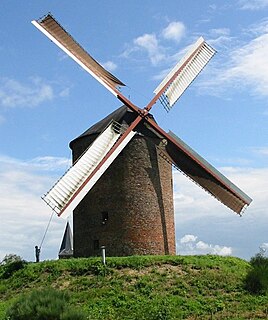
The Grafelijke Korenmolen van Zeddam is a tower mill in Zeddam, the Netherlands, which has been restored to working order. The mill may have been built before 1441, making it the oldest windmill in existence in the Netherlands. It is listed as Rijksmonument number 9290.

Huizermolen is a post mill in the Netherlands Open Air Museum, Arnhem, Gelderland, Netherlands which was built in 1919 and is in working order.

De Hoop is a tower mill in Arnhem, Gelderland, Netherlands which was built in 1846 and is in working order. The mill is listed as a Rijksmonument.

Het Fortuyn is a tower mill in the Netherlands Open Air Museum, located in Arnhem, Gelderland, Netherlands which was built in 1920 and is in working order.
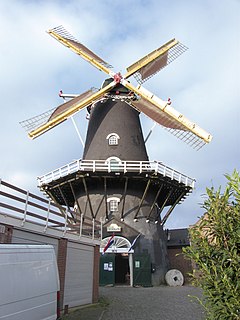
De Kroon or the Klarendalse Molen is a tower mill in Arnhem, Gelderland, Netherlands which was built in 1870 and is in working order. The mill is listed as a Rijksmonument.

A hollow post mill at the Netherlands Open Air Museum, Arnhem, Gelderland, Netherlands was originally built at Gouda, South Holland, Netherlands. It was dismantled in 1946 and re-erected at the museum. The mill has been restored to working order.

Batenburg Windmill is a post mill in Batenburg, Gelderland, Netherlands which was built in the 18th century and is under repair as of February 2014. The mill is listed as a Rijksmonument.

De Wielewaal is a tower mill in Beneden-Leeuwen, Gelderland, Netherlands which was built in 1857 and is in working order. The mill is listed as a Rijksmonument.

De Haag is a post mill in Beuningen, Gelderland, Netherlands which was built in 1706 and has been restored to working order. The mill is listed as a Rijksmonument.




